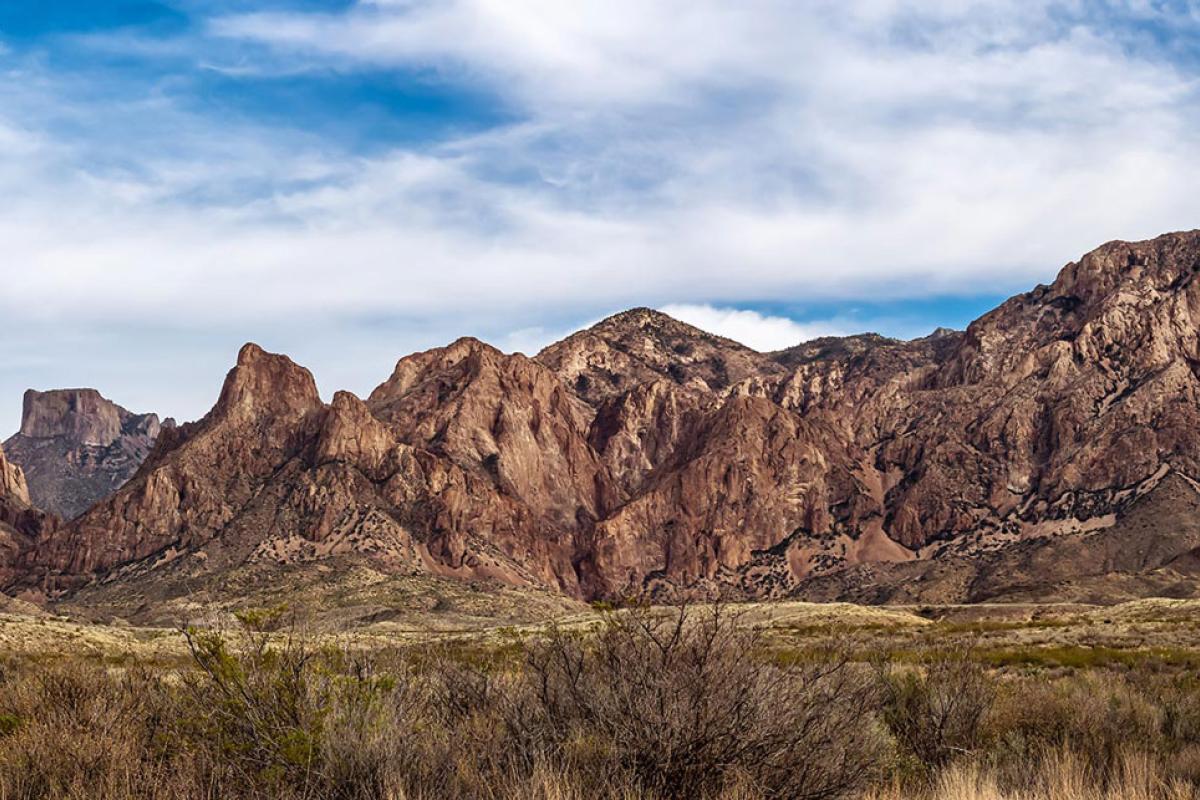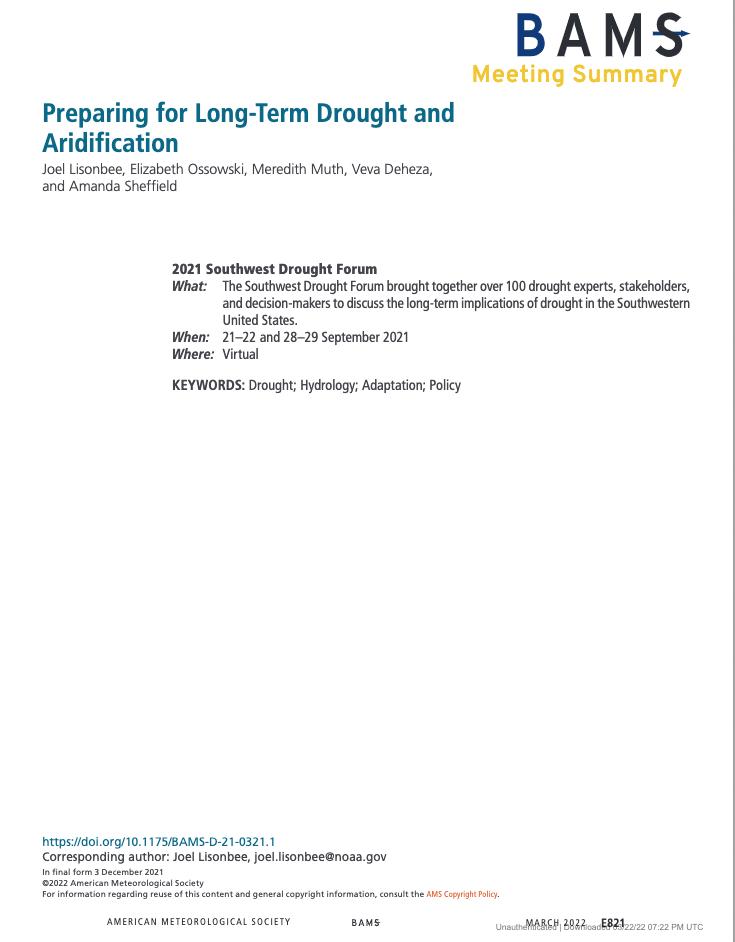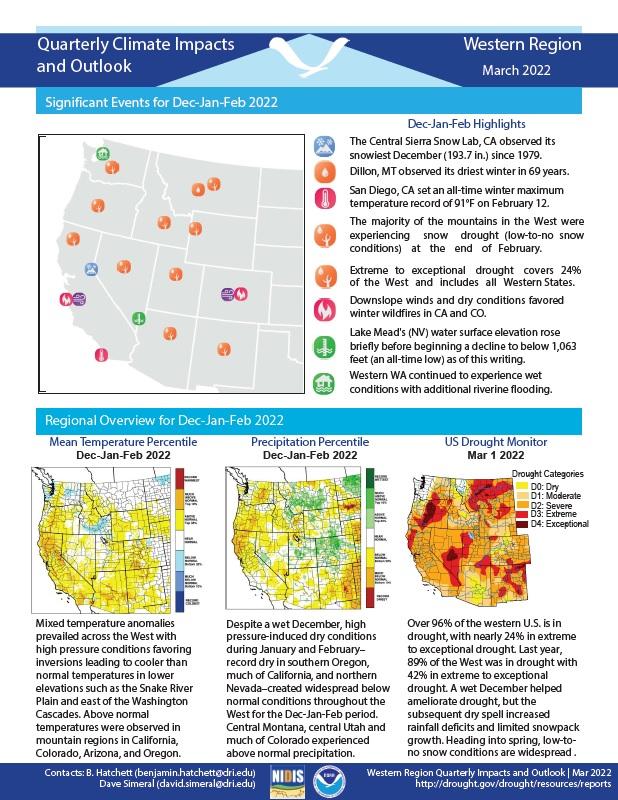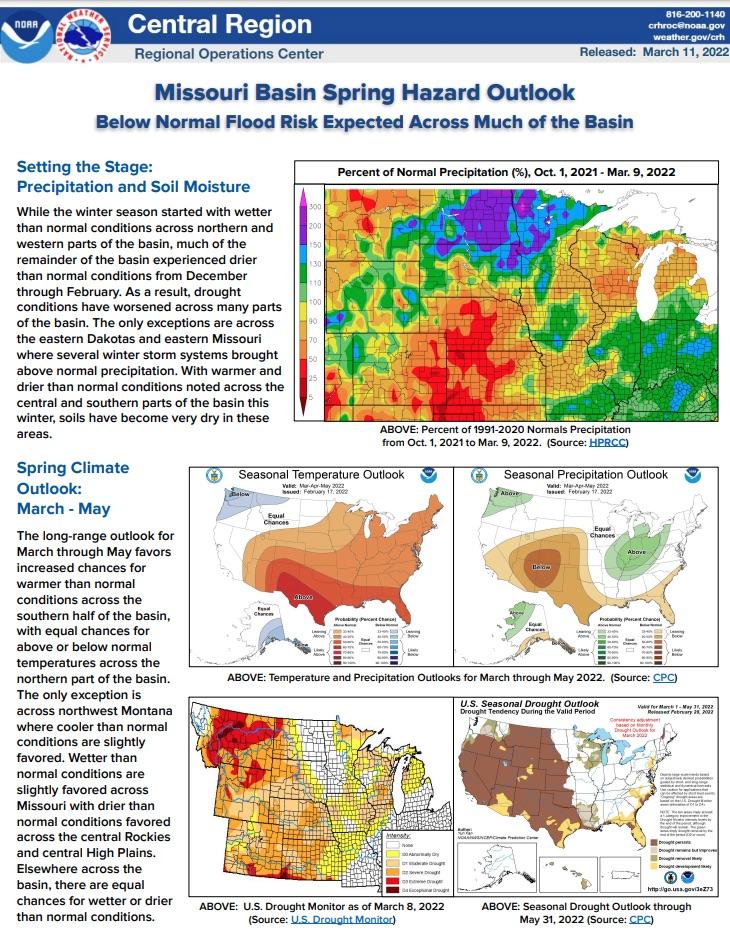The southwestern United States, comprising the states of Arizona, California, Colorado, Nevada, New Mexico, and Utah, is experiencing an historic continuing drought. In early 2020, an extreme deficit in precipitation paired with extremely high temperatures marked a low point in two decades of below-average precipitation across the region.
Quarterly Climate Impacts and Outlook for the Western Region for December 2021–February 2022. Dated March 2022.
Above-normal temperatures were observed in mountain regions in California, Colorado, Arizona, and Oregon. Despite a wet December, high pressure-induced dry conditions during January and February created widespread below-normal conditions throughout the West.
The National Weather Service developed 2022 Spring Hazard Outlooks in coordination with NOAA's National Centers for Environmental Information (NCEI) and National Integrated Drought Information System (NIDIS); High Plains Regional Climate Center; Midwestern Regional Climate Center; U.S. Department of Agriculture; and National Interagency Fire Centers' Geographic Area Coordination Centers. This outlook highlights the various spring hazards that could occur and potential impacts across the Mountain West.







